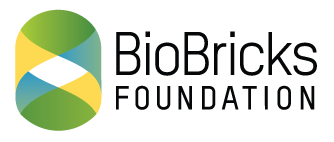Phil Ross
Explore Phil's Work with BioBricks
Background
While walking up a hill to get a view and some air I saw a small snake as it wriggled off into the brush and out of sight. I took the symbolism of this to heart and also changed a path along the ways of the world. I joined the BioBricks Foundation as an Artist In Residence, and a Synthetic Genomics lab at Stanford as a Visiting Scholar. The BioBricks Foundation is an organization that looks to a world where genetic engineering is as standardized and easy to assemble as electronic components are today. Synthetic Genomics brings together genetics, information science, biochemical engineering, cell biology, artificial life, ethics, and design among others considerations.
The work represented here is a formalized view of my experience as a scholar and artist, with a focus on the translation, design, and expansion of biotechnological narrative languages. These include some drawings as ideas about Genomics, and several experiments towards interfacing with the internet of biological things- The Bionet.
SHOW MORE
In my past work I avoided direct reference to genetics and bioengineering, though I have long studied the history and theory of these technologies. While being part of the living world, they also act as an instrument towards its administration and control. No more avoiding. I came to sit as one who has been welcomed to braid a bridge together.
The logic that is represented in genomics has very few proofs towards a greater understanding of how life actually works. It is like having 3% of the information of a system and trying to figure out how to advance into a greater space of knowing, while being certain of what one is doing. Many of the steps in genomics experiments are focused on double and triple checking everything to make sure that a very weak signal can be read with some type of certainty. Most experiments advance at a mind numbingly slow rate. Each practitioner and laboratory has to patch together information, resources, and time according to their budgets, experience, and proficiency. With all that, the outcomes have to fit into a universal standard that anyone else on the planet with appropriate know-how should be able to reproduce.
While validation and transmission can be slow, the tools becoming available in the field of bioengineering are daunting in their reach. It is possible to do things in a week that a generation prior might have been achieved in a year. The information generated from experiments is vast. Bioengineers from a generation past experienced the advent of PCR based technologies, a groundbreaking process that made apparent life’s most intimate instances and utterings. The time of my residence and scholarship aligned with the emergence of CRISPR, another powerful biotechnology that will expand the possibilities for understanding and manipulating life.
The extended capabilities of these technologies has been accompanied by a rapidly evolving syncretic language capable of describing the function and manipulation of genomic artifacts. These subcultural languages are being collaged together by a globally distributed group of students, engineers, and other practitioners who are intuitively trying to open up the field of material-information theory to a broader audience of active developers. Administration of information at any level expands possibilities for imagined objects. It has been interesting to pay witness to the way language colonizes the advances of technological space.
SHOW LESS
